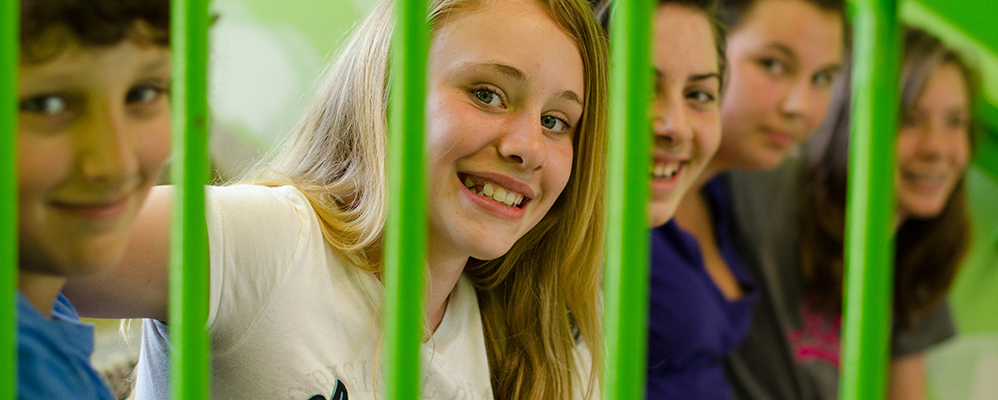Adventure Learning


What do students learn from
adventure learning?
Learning Story
In adventure learning, students take and manage risks as they explore and connect skills to discovering and understanding their world.
For healthy growth, children need to be able explore and take risks. Play is one of the most natural aspects of childhood and contributes to children’s physical, mental, emotional, social and creative development. Children learn to assess and overcome danger and hazardous situations through personal experience. By exploring and taking risks, they learn how to respond to different situations. Adventure learning promotes confidence and independence. It also helps children be more active thus contributing to good health.
Adventure learning has undergone radical changes and, in fact, declined in recent years. Nowadays, many parents consider it dangerous to allow children to roam freely throughout the neighbourhood, hiking or cycling independently to nearby fields, forests or creek beds. They worry about safety, about their children’s ability to make appropriate decisions and to deal with strangers. Since we understand the value of adventure learning and we recognize that children do not have the opportunity to engage freely in this type of play during their leisure time, it is incumbent on our schools to help fill the gap by providing similar learning experiences.
Educators can foster opportunities for children to engage in adventure learning. Depending on the school neighbourhood and board policies, children and educators may plan activities to take place in natural settings which may enable leadership possibilities and team interactions.
I teach in an area of Ontario known as cottage country. Recently, a developer proposed to develop the waterfront property of a small lake in our community and build more cottages than would normally be permitted for such a stretch of land. The plan includes two new roads to the lake, each to be dotted with cottages, a community boat launch and a dock. The development will likely have an impact on water quality, natural wildlife, fauna and traffic patterns in the immediate and surrounding area. My grade six class took on the task of assessing the proposal.
We planned a field trip to the proposed development site. Prior to the event, the students were tasked with developing a plan for making the best use of our visit. We invited an expert to the class who could show us plans for the proposed development. Next, the students worked in teams of four to study the proposed changes and acquire relevant background knowledge to help in their assessment. Groups of students looked at water quality, plant life, wildlife and transportation. Each group developed a list of questions for which they estimated they would find answers on location.
We also discussed plans for a picnic. Each team took responsibility for an aspect of our lunch. One group was responsible for the cook stove/barbeque, one for the hotdogs, one for salads and one group for the s’mores. Each team presented its plan for its part of the lunch to the whole class to ensure nothing was overlooked.
The class also planned a scavenger hunt. Prior to the day, the class split into two teams. Each team created a hunt for the other, based on items they anticipated could be found on location. On site, the children worked in pairs and were given one hour to explore a large property, within specific boundaries, to find everything on their list. Prizes were awarded to the teams who completed their hunt the fastest. Parent volunteers were asked to supervise the perimeters of the property to ensure students remained in the designated area.
The students learned a great deal. While there was some structure to the activity, the values of adventure learning were evident. There were numerous opportunities for leadership and often the role of leader was taken up by children who typically did not lead in the classroom. As well, the children enjoyed opportunities that the classroom does not afford such as freedom to explore and make independent decisions in a new environment, etc. This hands-on outdoor adventure enriched student engagement and allowed children to make new discoveries about their skills, their world, and themselves, in exciting ways.



